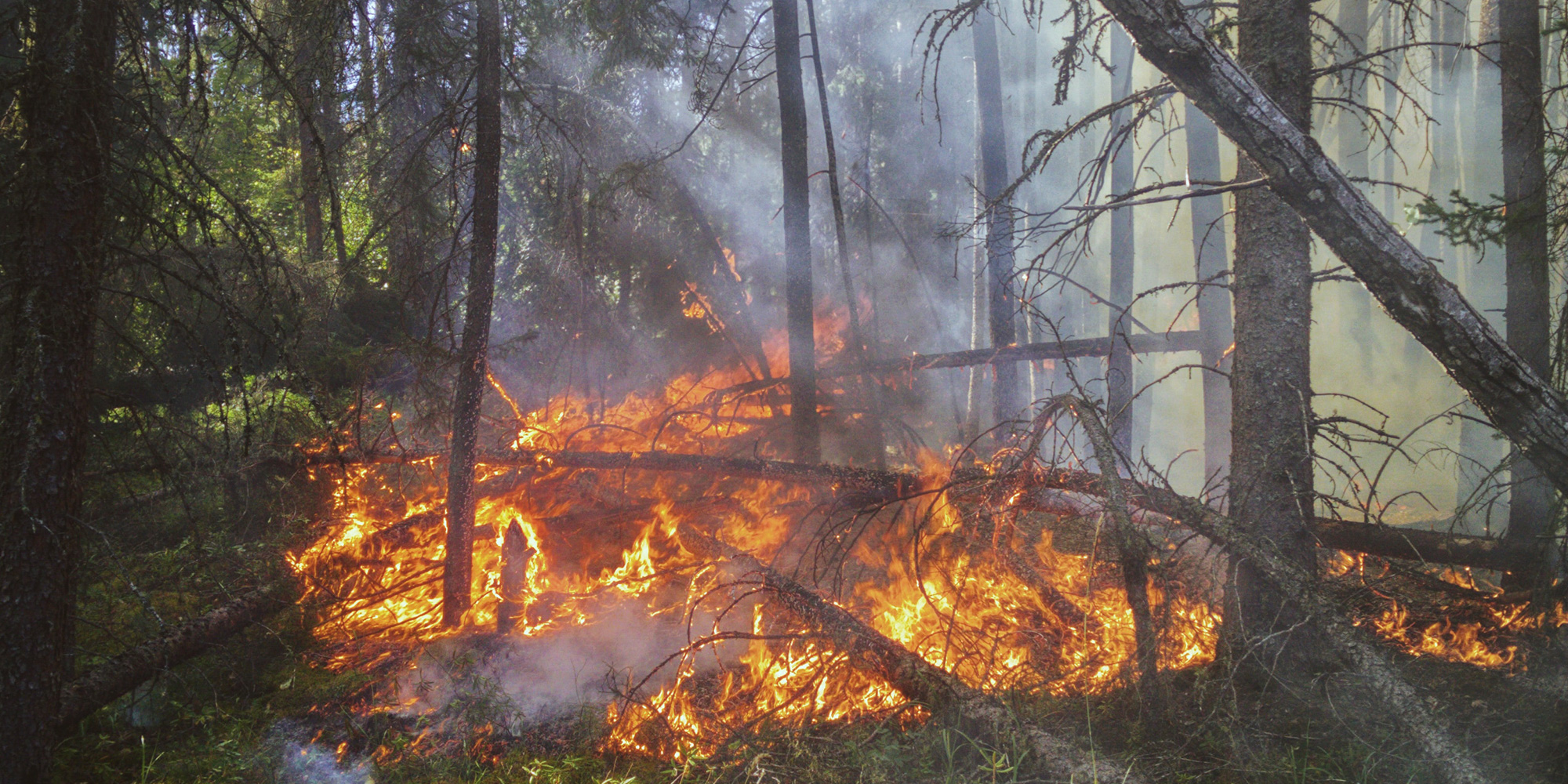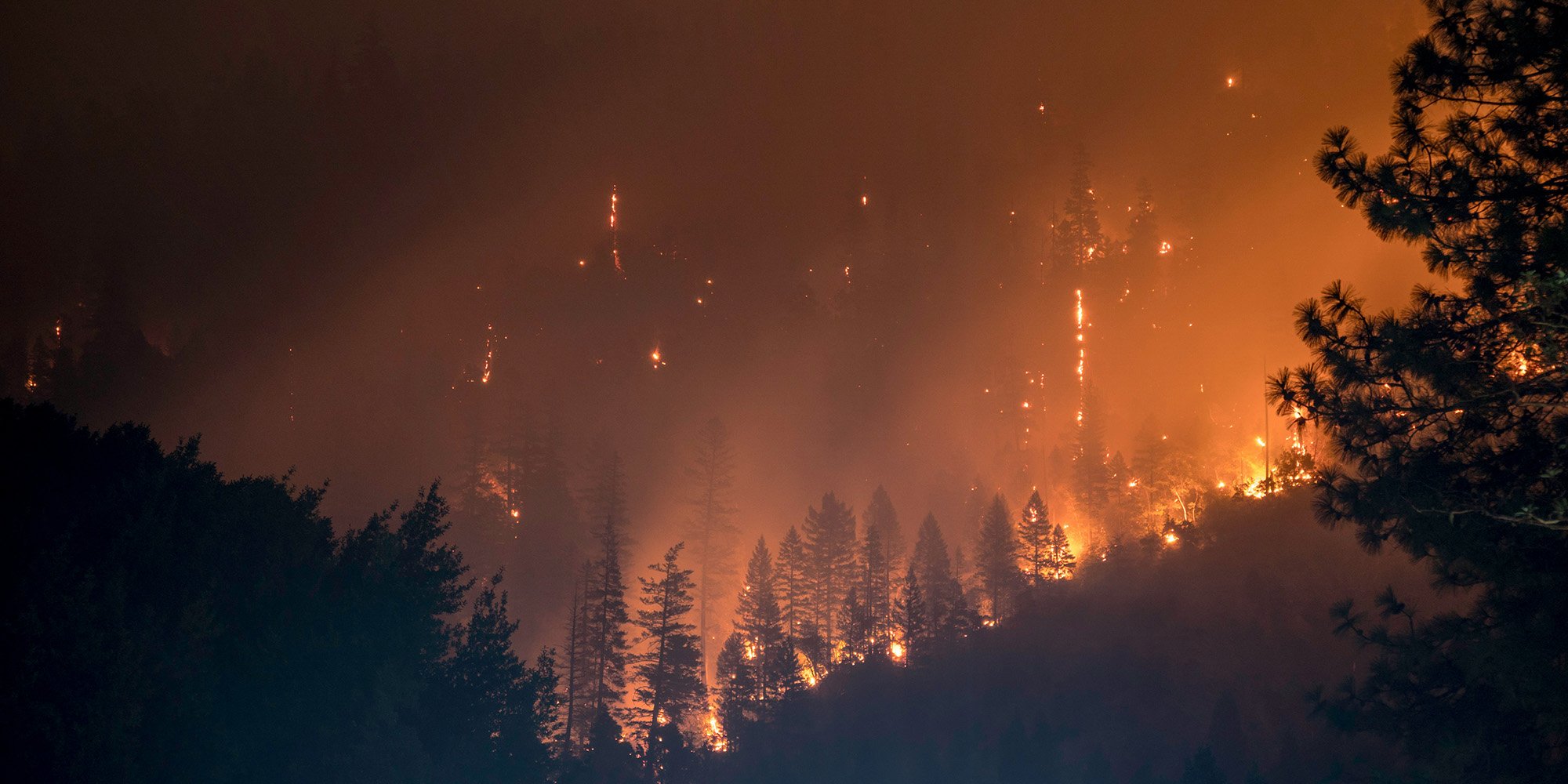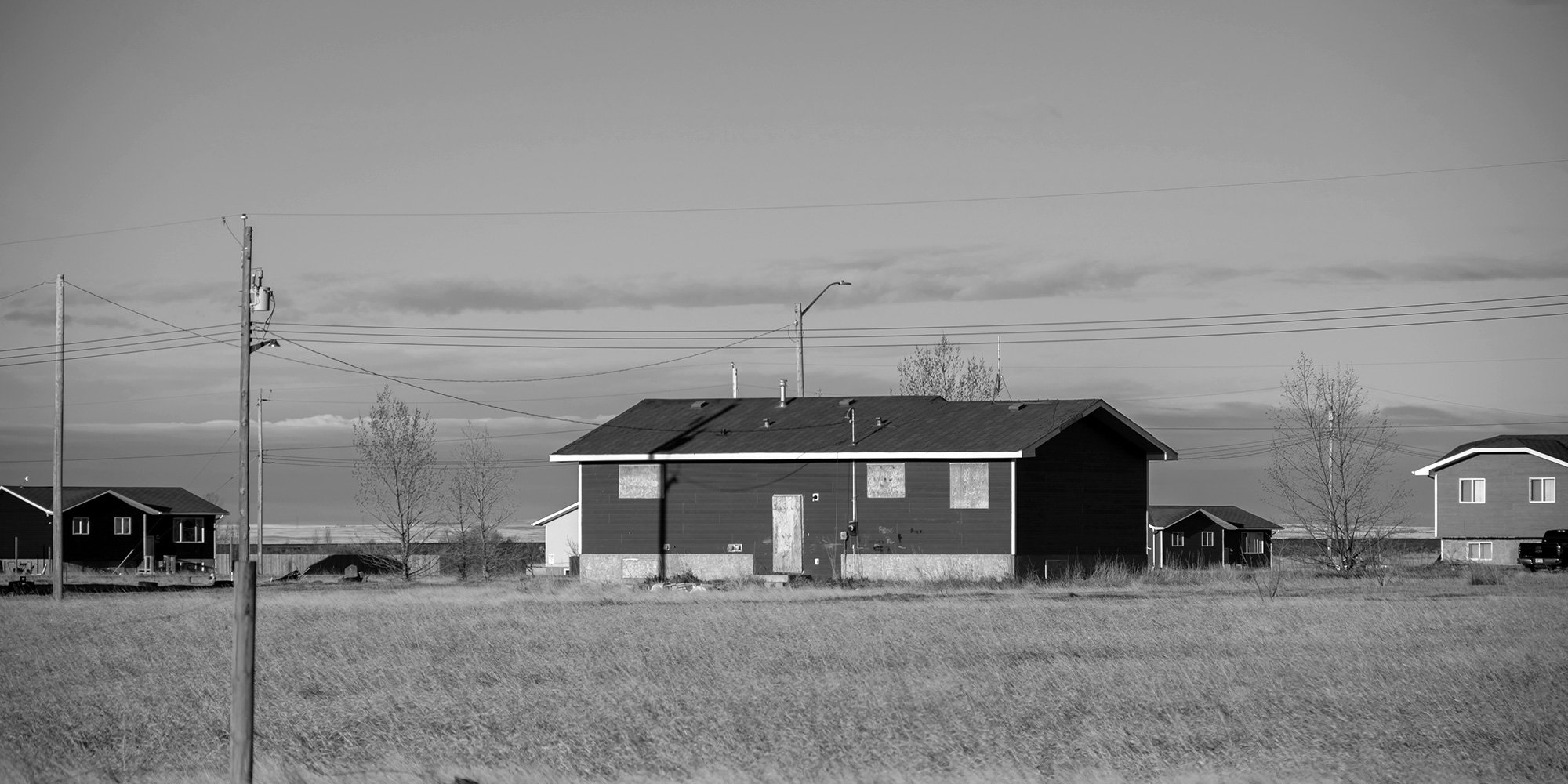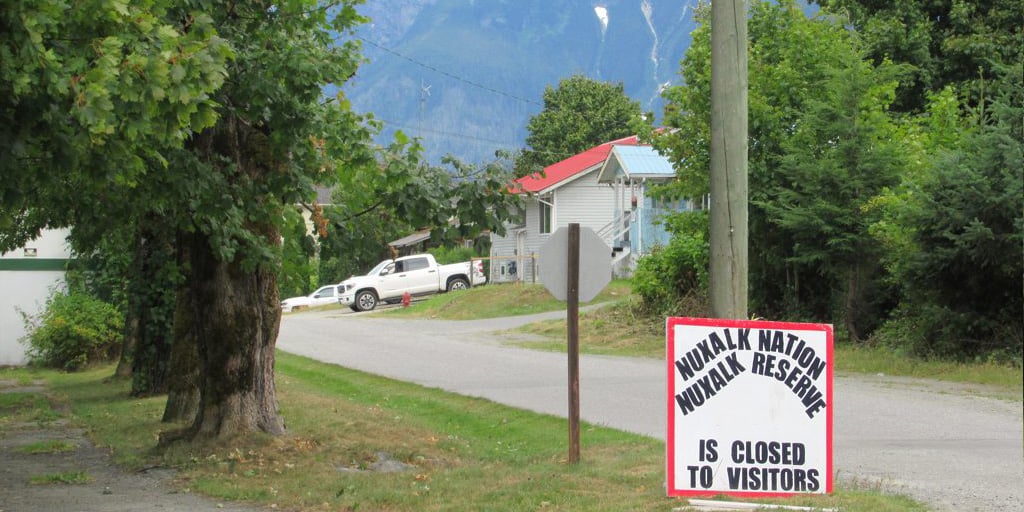Climate Change and Emergency Management for Indigenous Communities
The impact of climate change has been felt across Canada as unprecedented heat domes, atmospheric rivers, and forest fires ravage the landscape. It’s...

The severity and impact of forest fires dominate the headlines every summer. In 2016, the Fort McMurray, Alberta, wildfire invoked the largest mass evacuation in Canadian history, with nearly 90,000 people forced from their homes. Many of the evacuees were Indigenous from urban areas and reserves.
In 2018 it was wildfires in BC that dominated the headlines. By the end of August, more than 12,984 square kilometres of the province had burned, surpassing the recording-breaking 12,161 square kilometres of the previous year.
Forests and wooded areas cover more than half of Canada. Because many Indigenous communities are located in remote areas surrounded by forests, they are at particular risk.
Our data shows that over the last 30 years there is a 33 times greater chance of being evacuated due to wildfires if you’re living on a First Nations reserve as opposed to off-reserve. [1]
Fires are traumatic experiences on many levels for all involved. When a fire threatens or destroys an Indigenous community, there are unique factors involved. In this article, I focus on the impact on Indigenous communities but in doing so in no way am I diminishing or disrespecting the impact on others.
There is a disconnect in emergency and disaster responses to Indigenous communities threatened by forest fires. Which level of government - federal, provincial, or municipal - is responsible for relaying vital information or providing resources to the communities? Any delay in communication can leave a community vulnerable or in limbo.
Fire officials in BC are responsible for the region during wildfires, but the federal government is responsible for First Nations. Because of this disconnect between government agencies, evacuation orders may be delayed. Band councils are responsible for issuing evacuation orders for members on reserve land based on advice from provincial and regional fire districts. [2]
Evacuating a remote reserve in an emergency poses some serious logistical problems. Communities often have a high number of elders and young children and not everyone has access to a vehicle or can drive.
Following the 2017 wildfire season, BC First Nation leaders submitted a proposal to the federal government outlining their recommended actions for a coordinated preparation and response to wildfires.
List of the seven recommended actions contained in “A Proposal for a BC First Nations Emergency Management Fund" to prepare for, prevent, respond to and recover from emergencies (2017):
Review and, as necessary, revise, the status and adequacy of all 203 First Nations' emergency preparedness, evacuation and response plans and their full and effective operational implementation.
Support for the development of comprehensive strategic and operational level engagement and implementation plans of all BC First Nations with provincial, federal, regional districts and municipalities, as well as with government agencies such as Emergency Management BC and Wildfire BC for effective and coordinated response capacities;
Support all First Nations’ acquisition and ongoing maintenance of necessary assets including infrastructures, equipment and supplies to respond fully and effectively to emergency situations such as floods and forest fires;
Support for capacity development, including training and accreditation, of First Nations peoples who are responsible to manage and respond to emergency situations. Where trained, these response teams should be brought into situations where their skill and expertise are required;
Support for those evacuated or relocated and for recovery, restoration and/or rebuilding of lands, homes, infrastructure in First Nations communities, as well as support for those evacuees returning, bearing in mind their dignity, health and well-being. In addition, there will need to be support and resources for the many communities, including First Nations communities, who opened their doors and welcomed all those who needed refuge and a safe haven.
In 2017, Tl'etinqox village at Anaham served as a central gathering point for many on the Tsilhqot’in highway and should be supported as a response centre for Tsilhqot’in, southern Carrier and other communities.
There have been and will continue to be broader impacts, such as loss of traditional food security due to inaccessibility of traditional food sources including fish, loss of hay and grazing land for livestock, and loss of cultural heritage, among many. Those who have lost livestock and other means of livelihood or food security should be supported in their renewed efforts for re-development.” [3]
Infrastructure on reserves is often below the national standard at the “best of times.” Here’s a snapshot of the infrastructure funding allocation challenges for reserves:
The Capital Facilities and Maintenance Program (CFMP) within AANDC is the main pillar of the Government of Canada’s effort to support community infrastructure for First Nations on reserve. The program’s funding, which totals over $1 billion per year, is invested in four main areas: housing, education, water and wastewater systems, and other infrastructure (roads and bridges, fire protection, electrification, community facilities, etc.). The program has three funding streams – operations and maintenance (O&M), minor capital (for projects under $1.5 million) and major capital (for projects over $1.5 million). The Committee has heard that First Nation communities have to make difficult choices about how to distribute their capital allocations. The funds allocated under this program need to cover renovations, housing, transportation, rehabilitation, septic and water systems, school additions, access roads, upgrades, new constructions, restoration, electrification, and waste management. [4]
Loss of or damage to a community’s infrastructure exacerbates an already difficult situation.
In at least one community, the fire was so hot it melted the underground septic tanks which means the groundwater is now likely contaminated.
Band offices and houses are sometimes not insured, which means the loss of just one home or office is absolute financial devastation. It also means crowded living conditions can become more crowded as the same number of people are now living in fewer homes.
The Tahltan First Nation community Telegraph Creek was devastated by wildfires that merged into one enormous 1,180 square kilometre blaze:
The whole nation has taken a hit. Even the homes that are still standing suffered a great amount of either water damage or smoke damage,'' she said.
Our wildlife has been significantly hit hard. Even our rivers, we may not even be able to go home and fish for a few summers. [5]
When a community loses its band offices, school, and some homes, it cuts a swath through the heart of the community. Community members are forced to relocate to urban areas for school and employment.
It’s hard for a community to rebuild with its members scattered to the four winds, and it’s hard for community members to keep their cultural activities intact when separated from their traditional lands and pursuits. When a building that houses critically important regalia and cultural icons is destroyed by fire it’s a loss that impacts the future of the culture.
Canada's minister of Indigenous services visited the region last month and says the Tahltan Nation incurred the worst structural damage caused by wildfires of any First Nations community in recorded Canadian history.
Fires have always been part of certain Indigenous cultures but those fires are purposeful and managed. When vast areas of habitat are destroyed by wildfires harvesting and gathering traditions are impacted, and continuity of the traditions is compromised due to the need for community members to relocate for school, housing, and employment.
The ash, which coats everything and can be quite thick, can contain carcinogenic and mutagenic hydrocarbons from the combustion of the forest. So, when the habitat does recover, will the traditional foods be safe for consumption? Studies to examine the impact of fire on traditional foods are underway.
Displacement and evacuations disproportionately affect First Nations communities across Canada, and there is evidence that evacuations and long-term displacement have negative consequences on community cohesion; mental health and psycho social well-being; and overall resilience. Evacuations can exacerbate the physical, mental, spiritual, and social impacts of a disaster.
The negative impacts of recent evacuations and the long-term displacements of First Nations communities in Canada have been documented. They clearly show how families and communities face continued suffering during and post-evacuation, affecting those remaining in the community and those placed with a host community. Displacements often result in social isolation; lack of access to traditional food; repeated moves; job insecurity; lack of, or inconsistent, access to education; and poor psychological health outcomes. [6]
For those who survived the trauma of residential schools, dislocation from their community can be severely traumatic and evocative of their experiences in residential schools. If the emergency shelter is in a school auditorium that adds to their trauma. The sight of a school auditorium with lines of cots can trigger flashbacks to residential school experiences.
Indigenous people, in an evacuation situation, are sometimes exposed to culturally inappropriate comments and stereotyping, which contributes to their unease and impacts their mental health.
As all signs indicate a future of increased forest fires, I hope this article provides some insight into the impact of forest fires on Indigenous communities.
[1] FIRE, HazNet Vol. 10 №1 Fall 2018, p 10
[2] Problems with Communications System Delay Evacuations in BC, First Nations in BC Knowledge Network, August 19, 2018
[3] First Nations Leadership Council press release: BC First Nations being devastated by Wildfire Season of 2018, immediate resources needed, August 22, 2018
[4] HOUSING ON FIRST NATION RESERVES: Challenges and Successes Interim Report of the Standing Senate Committee on Aboriginal Peoples, p 40
[5] Tahltan First Nation faces many more months away from home after wildfire devastation, CBC News, September 28, 2017
[6] From Displacement to Hope: A Guide for Displaced Indigenous Communities and Host Communities, Indigenous and Northern Affairs Canada, March 2017, p 1
Featured photo: Unsplash

The impact of climate change has been felt across Canada as unprecedented heat domes, atmospheric rivers, and forest fires ravage the landscape. It’s...

Indigenous People face the worst housing outcomes in the country. Hon. Marc Miller, Minister of Crown-Indigenous Relations [1] To understand the...

Did you know that adequate housing was recognized in the 1948 Universal Declaration of Human Rights? Did you know almost one in six Indigenous people...